How to Cook Jasmine Rice
Jasmine rice is a type of Thai rice that I just can’t seem to get enough of! It’s long grain, making it a bit thinner and longer than some other varieties. Perhaps best of all, it’s perfectly light and fluffy.
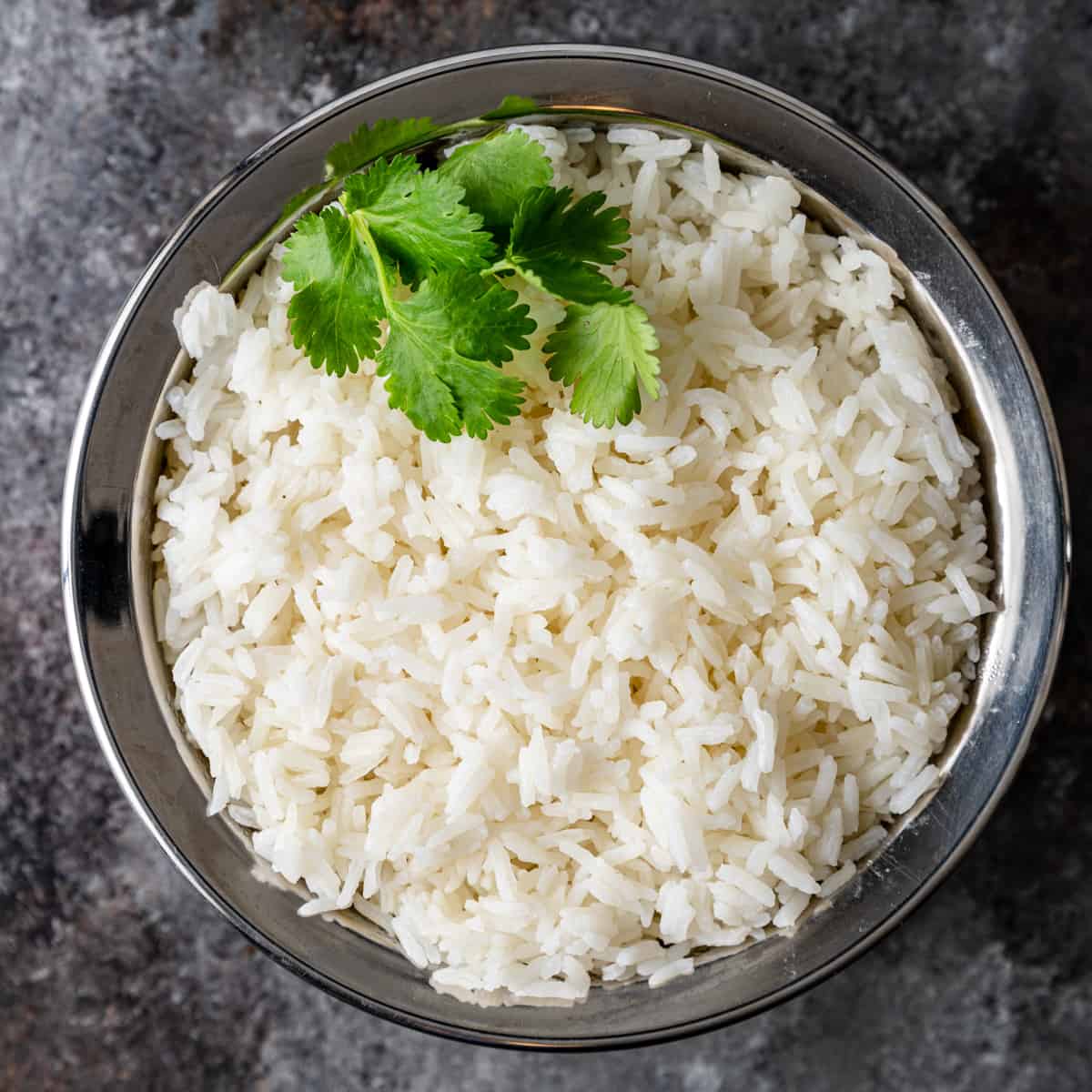
Of course, it works well with Thai dishes like pad Thai, all types of curry, and stir fry. But, it also pairs wonderfully with several other meals, like spiced eggplant stew, pork ramen with sweet and spicy meatballs, and Hunan chicken.
Like other types of rice, there is a specific way of cooking jasmine rice if you want to end up with the fluffy results I know you all love. I think we’ve all ended up with a sticky and gluey mess of rice at some point along our cooking journeys. That’s why I wanted to share this guide on how to cook jasmine rice, so you know exactly how to do it! No more mushy rice for the win! You’ll also learn:
- Whether or not you should rinse jasmine rice before cooking it
- The rice to water ratio for jasmine rice
- Different methods for cooking jasmine white rice
Plus, my favorite serving suggestions and recipes!
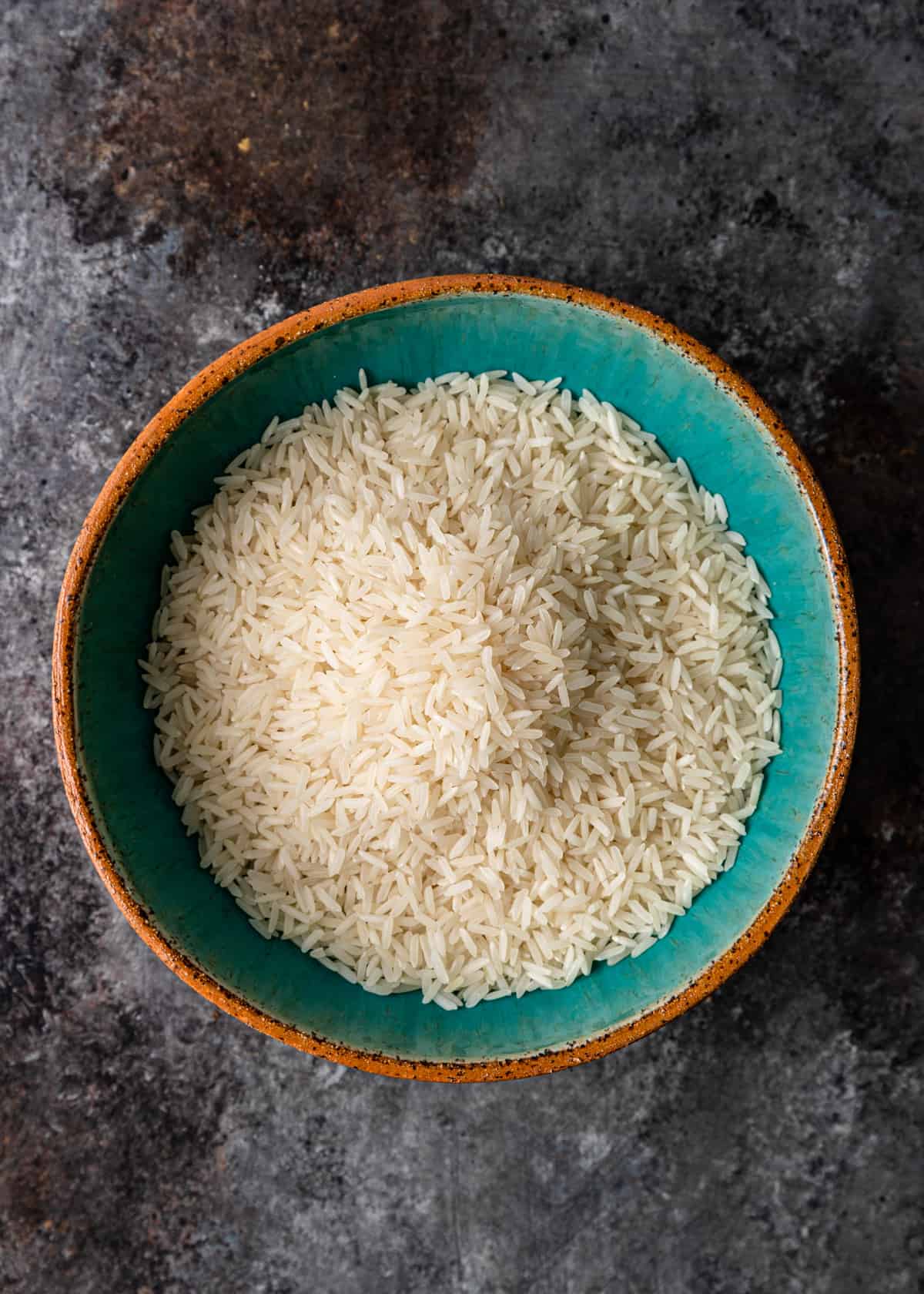
How to Cook Jasmine Rice
Jasmine rice boasts a very subtle flavor that I just love — it’s a bit nutty with floral notes (they don’t call it jasmine rice for nothin’!), and it is fluffy and sticky when cooked. It adds a little extra oomph that you just don’t get with regular white rice. You can cook jasmine rice on the stovetop, in an Instant Pot, or in the microwave. You can also use a rice cooker, but I realize that’s a special piece of equipment that a lot of you may not have access to.
When it comes to learning how to cook jasmine rice, it’s important to note that it isn’t as firm as other types of white rice. That means that it needs less water. The more water you use, the gluier the rice will become. For light and fluffy results, make sure to consult the rice-to-water ratio I outline below!
Jasmine Rice-to-Water Ratio
Remember: jasmine rice requires a bit less water than other varieties of white rice. As a general rule for stovetop cooking:
Use 1 ¼ cups of water for every 1 cup of dry jasmine rice.
If you use a pressure cooker like an Instant Pot, you can decrease the amount of water ever so slightly and use a 1:1 ratio. For the microwave, you can use 1 ½ cups of water for every 1 cup of dry rice. These slight differences are key to getting the correct texture and consistency for the final results.
Rinsing vs. No Rinsing
There is much debate around whether or not to rinse jasmine rice before cooking. Some chefs swear by it, while others believe it doesn’t make that much of a difference. I tend to lean toward the no-rinsing camp. If I can take out an unnecessary step when I’m in the kitchen, I’m all for it!
If you do opt to rinse, make sure to adjust the water-to-rice ratio. As the rice will naturally absorb some of the moisture, you’ll have to reduce the water by about 2 tablespoons.
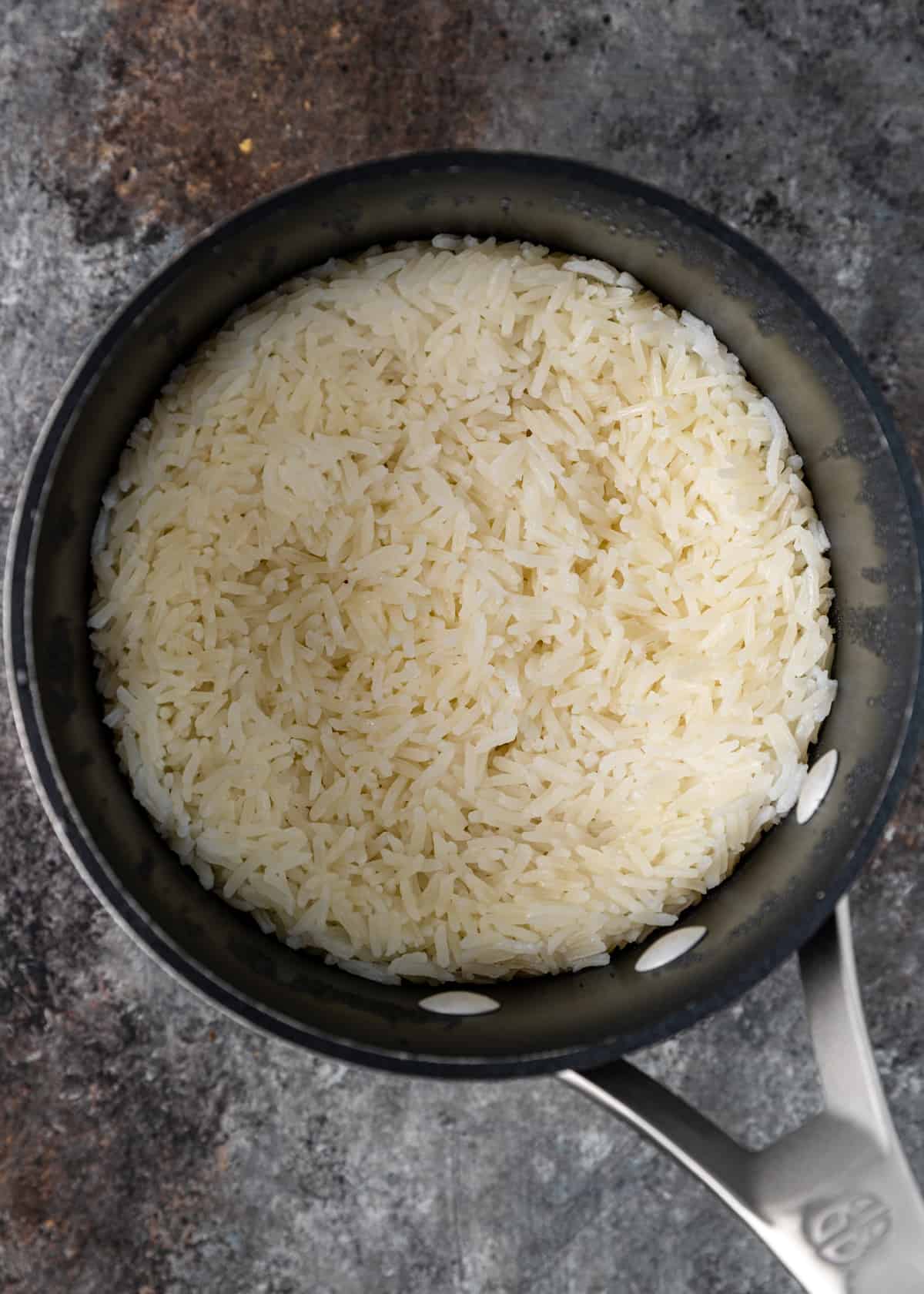
How to Cook Jasmine Rice on the Stovetop
I personally like to cook jasmine rice on the stove best. It’s super no-fuss, and I don’t have to break out any additional appliances to do it!
Step 1: Place 1 cup of dry jasmine rice and 1 1/4 cups of water in a saucepan over high heat. I always add a pinch of kosher salt and a tablespoon of butter, this is optional. Bring it to a quick boil and there is foam on the top.
Step 2: Cover the pan with a lid and reduce the heat to low. Allow it to cook, covered, for 10 minutes. Do not lift the lid!
Step 3: Remove the pan from the heat (do not lift the lid) and let the rice rest for 10 minutes. Fluff with a fork before serving.
How to Cook Jasmine Rice in the Instant Pot
Instant Pot lovers will be happy to know that you can also cook jasmine rice in your IP! This method is a bit faster than cooking on the stovetop and is great for making large batches.
Step 1: Place the 6 quarts insert into your Instant Pot, then add 1 cup of water to every 1 cup of dry jasmine rice. You may also add a bit of oil and salt if desired.
Step 2: Close the lid securely and set your IP to Pressure Cook (or High on the manual setting) for 5 minutes.
Step 3: Allow the pressure to naturally release for 10 minutes, and then perform a quick release to let any excess pressure out. Fluff with a fork before serving.
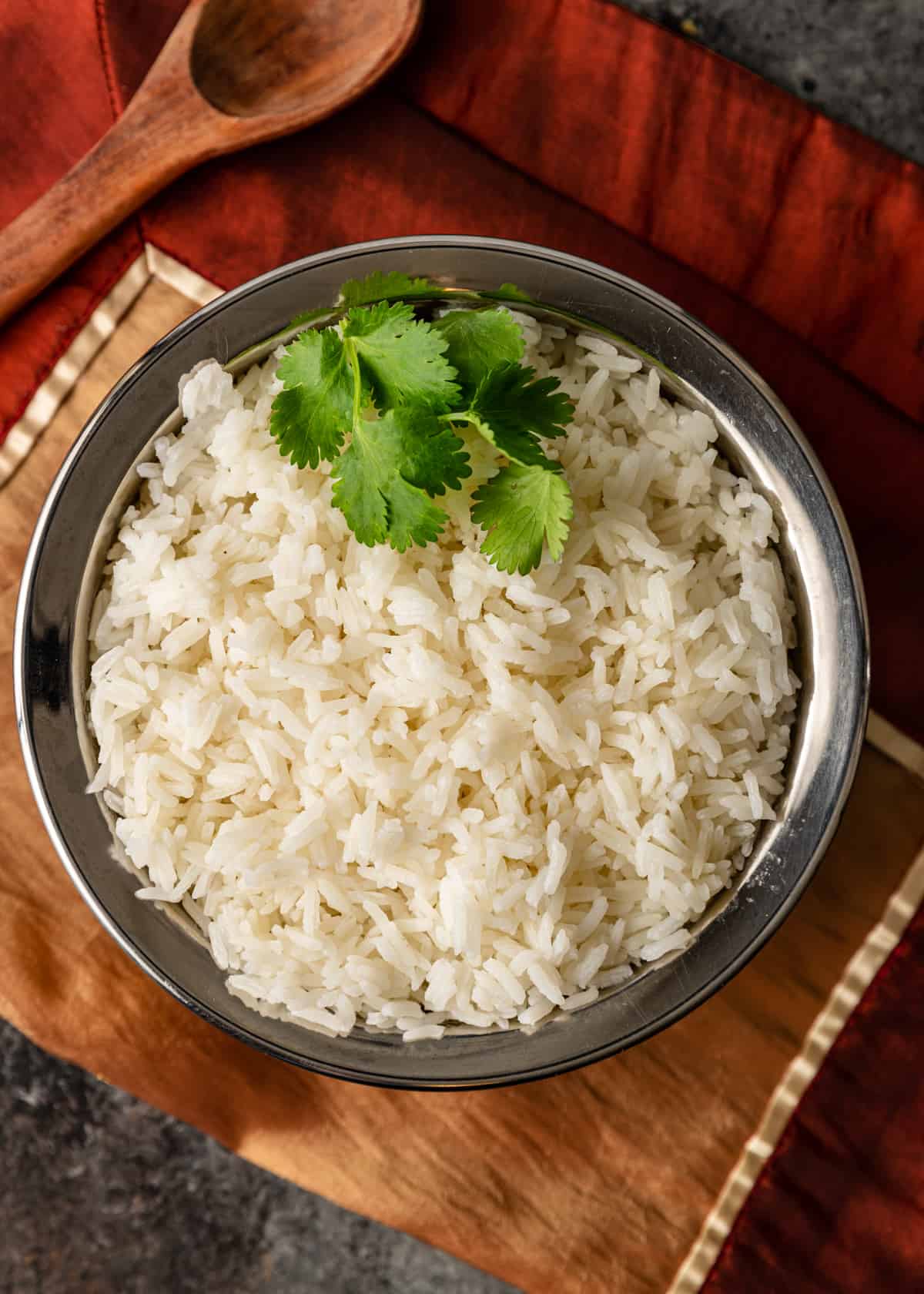
How to Cook Jasmine Rice in the Microwave
Another tried, and true method for cooking jasmine rice is in the microwave! It’s an easy set-it-and-forget-it technique that doesn’t require you to keep an eye on the stovetop.
Step 1: Place 1 cup of dry jasmine rice and 1 ½ cups of water into a microwave-safe bowl with a perforated lid. You want to use a lid with holes in it, so any excess steam is able to escape.
Step 2: Microwave on High for 5 minutes, then reduce the heat to Medium and cook for 10 minutes more.
Step 3: Leave the rice in the microwave and allow it to rest for 10 minutes. Remove it, fluff it with a fork, and serve.
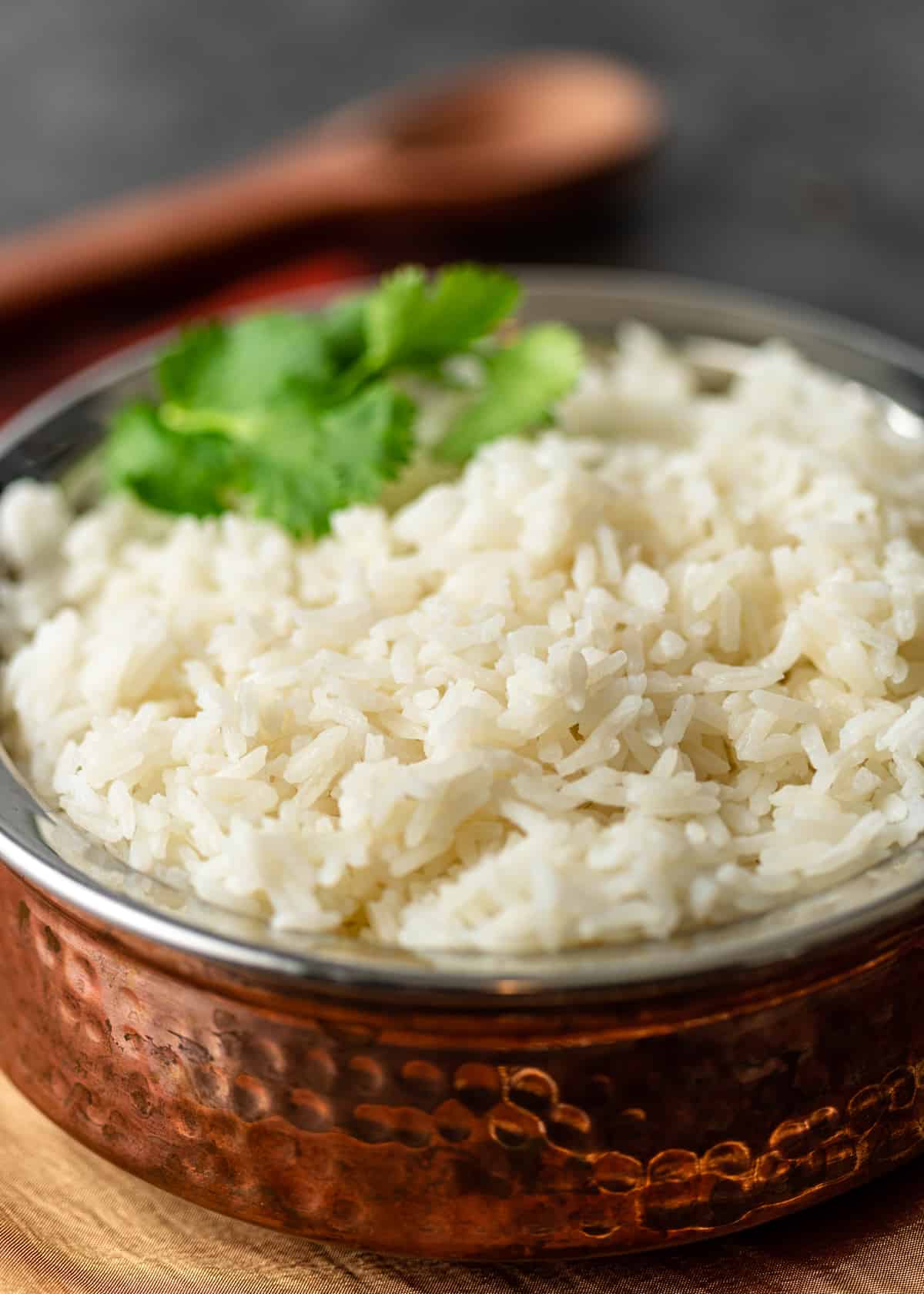
Tips for Cooking Jasmine Rice
Now you know how to cook jasmine rice on the stove, in an Instant Pot, and microwave, as well as how long to cook jasmine rice! I have a few other tips and tricks to share before you try it yourself:
- Keep in mind the all-important rice-to-water ratio: Too much water is the number one mistake when it comes to cooking jasmine rice. Follow the ratios that I listed above and you should get fluffy results every time! It truly is the key to avoiding gluey and overly cooked rice.
- Allow the rice to rest: You may be tempted to fluff the rice as soon as it’s done cooking, but trust me: you have to let it rest for 10 minutes for all cooking methods! This will allow the rice to absorb any excess moisture.
- No need to rinse or soak: Some chefs soak their rice before cooking to speed up the process, but I don’t think it’s necessary. The same goes for rinsing it! It’s an extra step that won’t make that much of a difference in terms of flavor and texture.
Ways to Use Jasmine Rice — Serving Suggestions
You can serve jasmine rice in so many different ways! Here are some serving suggestions to inspire you:
- As a side dish: I briefly touched on some dishes that would work well with jasmine rice, but the possibilities are endless! Thanks to its subtle nutty and floral flavors, it pairs well with just about any savory dish. Seafood, meat, poultry, plant-based options…get creative!
- In stir fry: Several Thai stir fry dishes feature jasmine rice, and for good reason. It’s firm enough to hold up well when pan-fried — plus, the flavor is so versatile!
- In wraps or burritos: Want to switch up your burrito and wrap filling? Use jasmine rice instead of Mexican or brown rice!
- In salads & soups: Adding jasmine rice to a salad will make it heartier and more filling. You can also use it instead of noodles for your favorite pasta salad recipes. The same goes for soup.
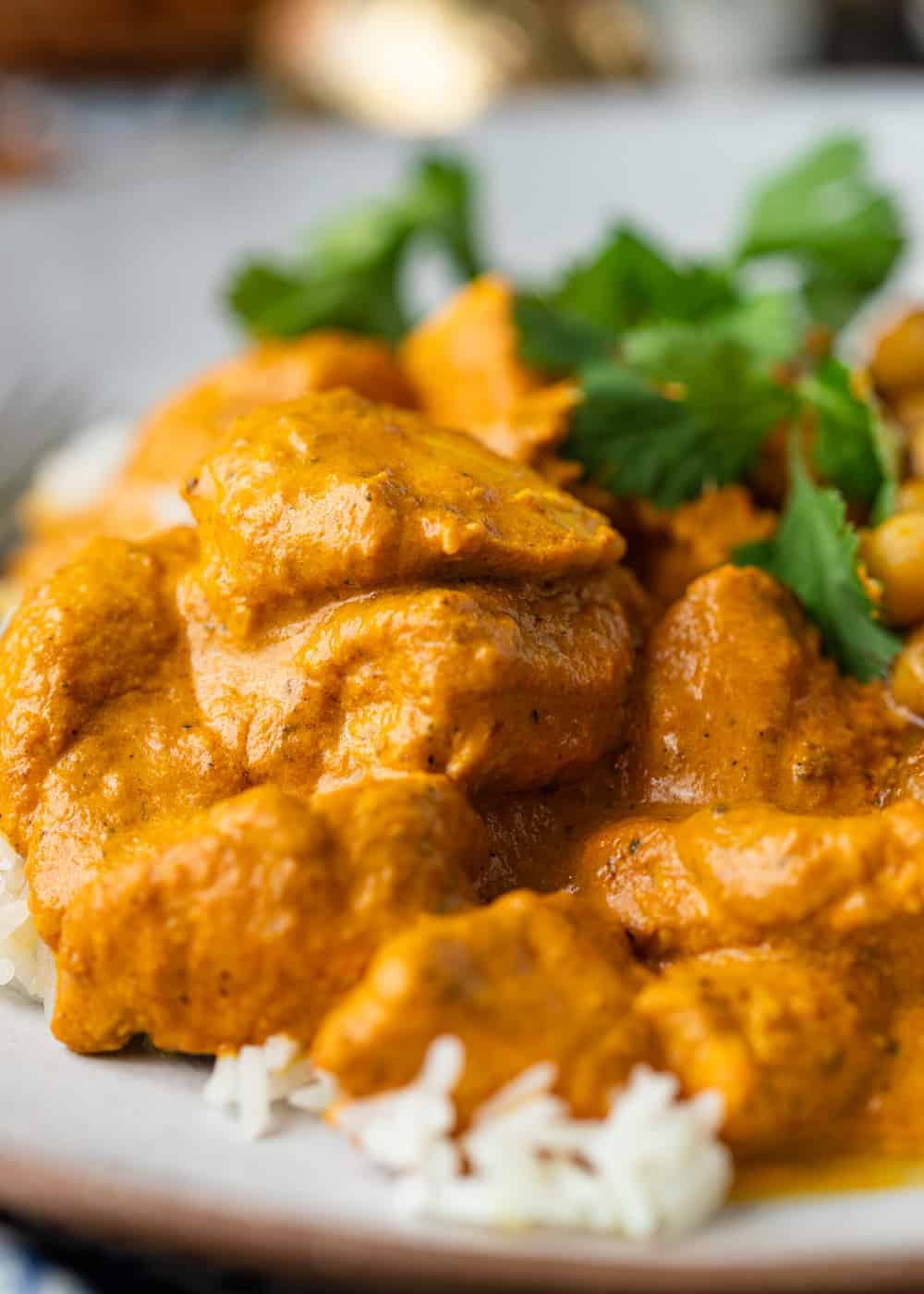
5 Great Recipe Pairings For Jasmine Rice
Learning how to cook jasmine rice is just the beginning — now it’s time to try it out with your favorite recipes at home! Here are a few ideas:
- Mango Curry Chicken
- Jeyuk Bokkeum (Pork Stir Fry)
- Beef Plov (Beef Rice Pilaf)
- Chinese BBQ Pork
- Butter Chicken Recipe
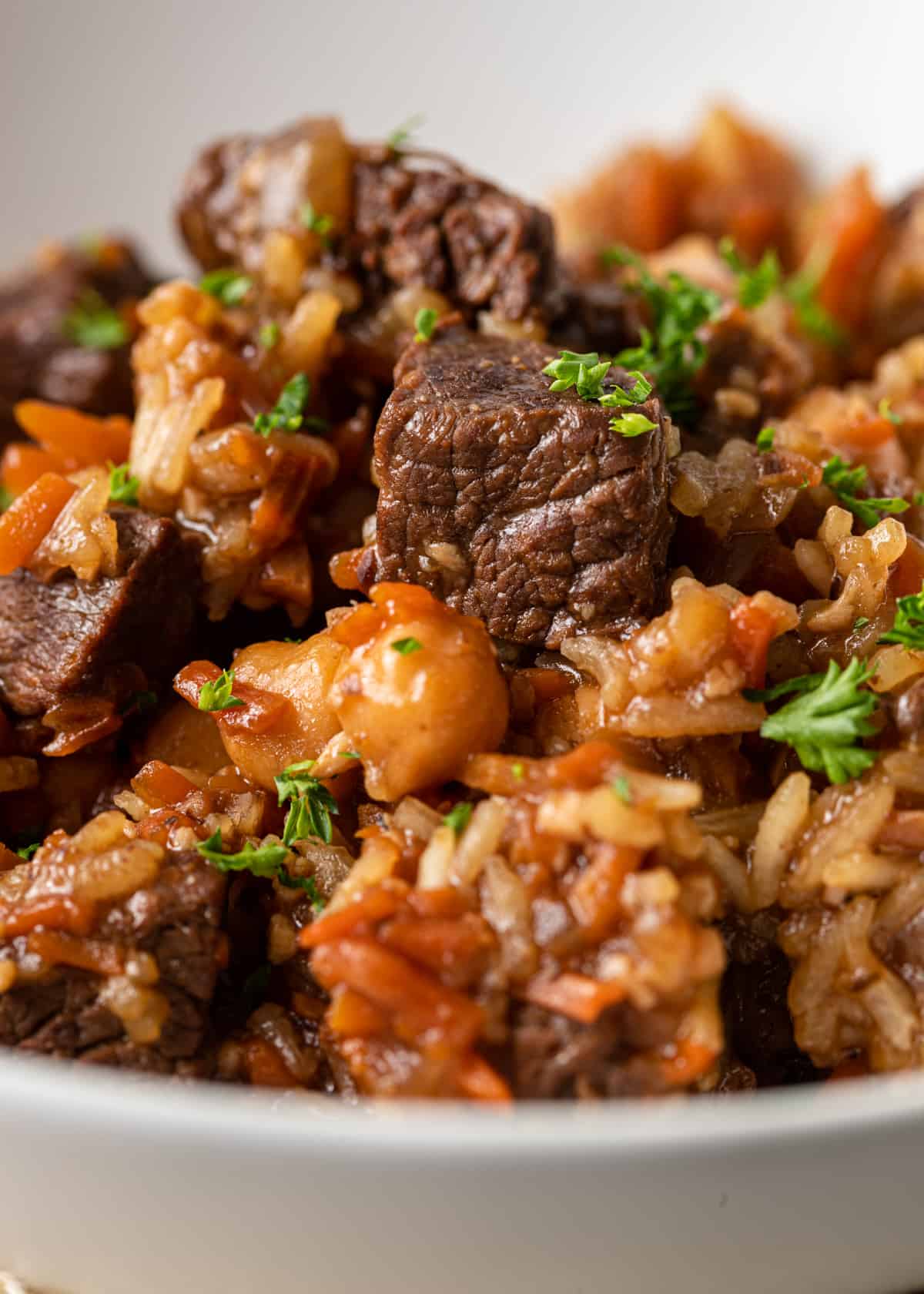
FAQs
How Should Jasmine Rice Be Cooked?
There are several different ways to cook jasmine rice: on the stovetop, in a pressure cooker such as an Instant Pot, and in the microwave. I typically opt for the stovetop or my IP, but feel free to try out all of the methods to see what works best for you.
How Long to Cook Jasmine Rice?
It depends on the method you use, but it should take around 15-20 minutes. Refer to the sections above to learn how long to cook jasmine rice in the Instant Pot, on the stovetop, or in the microwave.
Does Jasmine Rice Need to Be Rinsed Before Cooking?
The answer to this question will change depending on who you ask! But in my experience, it’s not necessary. Your jasmine rice will still come out fluffy and tasty even if you don’t rinse it. If you do decide to rinse it, make sure to slightly reduce the amount of water you use to cook it.
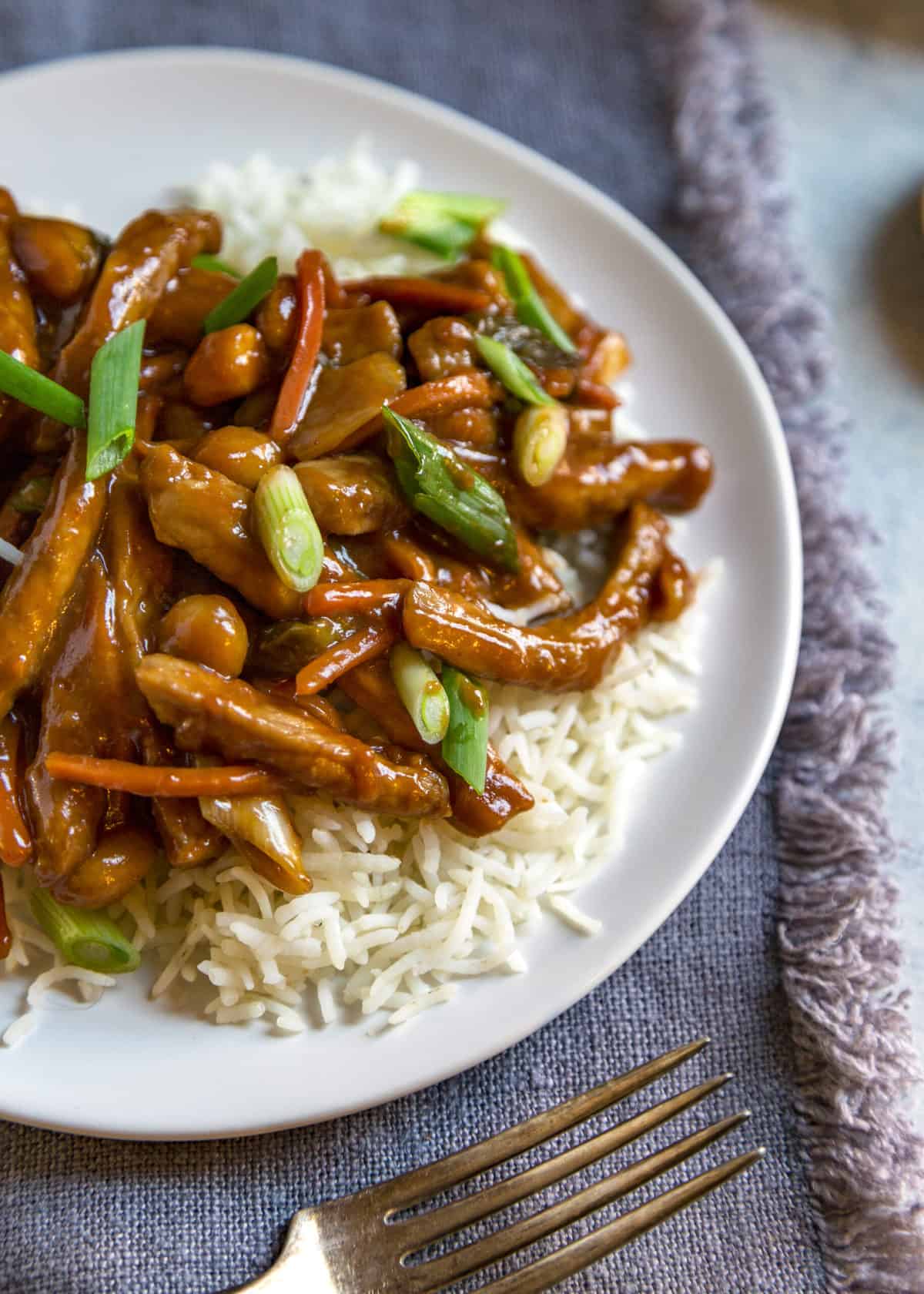
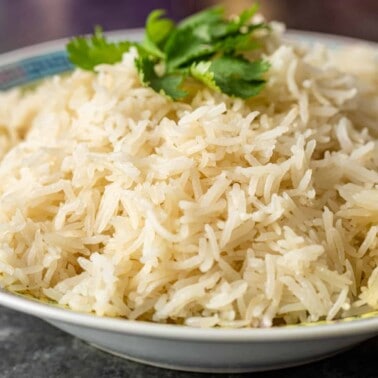
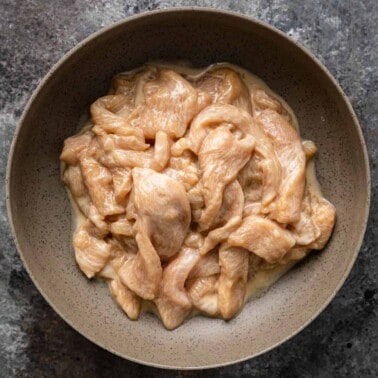
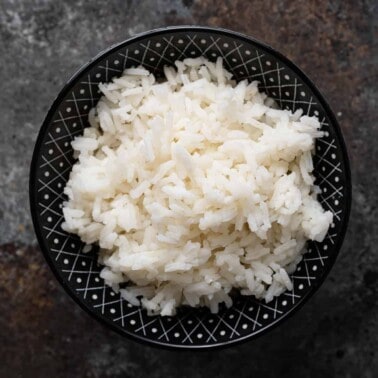
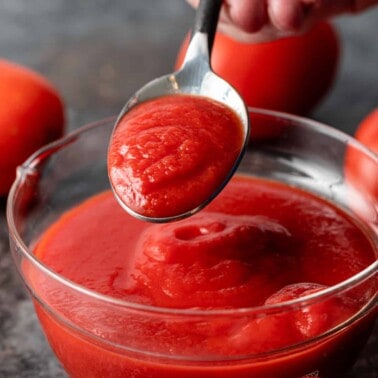








Could I freeze rice (cooked in the instant pot) in individual bagggies for later?
Yes, you can freeze cooked rice. Once cooked, cool it as quickly as possible by placing it in a shallow container in the fridge then transfer it to freezer bags in desired portion sizes, flatten to expel as much air as possible before sealing tightly.
I have a package of Jasmine Rice in my pantry. I had made it twice with terrible results! Sticky, gummy, chewy you name it. Then I found your site. Never knew about less water, the package calls for more. Followed your tips for stovetop last night…amazing!!! When it was cooked (perfectly!) added a little more butter, sea salt and scallions!! Best rice ever!!
Excellent, so glad you enjoyed this one Laura. 🙂